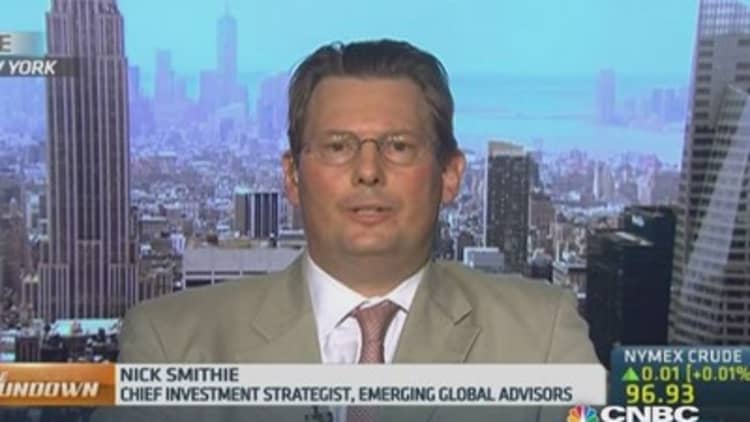
Frontier markets are storming higher, extending last year's stellar performance and outpacing emerging market peers as risk-seeking investors pile in, but their performance has raised questions over whether the exotic asset class is getting ahead of itself.
The MSCI Frontier Index's 20 percent year-to-date rise follows last year's 22 percent rally. Its gains dwarf those of the MSCI Emerging Markets Index, which is up 6 percent year to date.
However, Nick Smithie, chief investment strategist at Emerging Global Advisors, a fund provider known for its focus on emerging markets, believes there are further gains in store, noting the index is still 35 percent below 2008 highs.
"Beyond BRIC (Brazil, Russia, China India), countries are becoming a more important force in the global economy, with a rising share of world equity market capitalization and a higher labor force growth rate than the BRICs and developed markets," he said.
Read MoreEmerging markets: The risks markets may be missing
Smithie notes that while correlations between developed markets and emerging equity markets have increased in recent years, frontier countries are less tied to developed market stock performance. This gives them strong diversification potential within a larger portfolio.
John Loma, head of global emerging market equity strategy at HSBC says while near-term valuations have increased for the asset class, the longer-term outlook remains positive.
"Near-term valuations are not as attractive as they were; but this is not an over-riding constraint, given stronger growth," he said.
Frontier markets are trading at 13 times estimated earnings for 2014 compared with 11.5 times for emerging markets, according to HSBC. However, earnings growth in 2015 is forecast to be 15 percent for frontier markets and 11 percent for emerging markets, so their respective price-to-earnings ratios are 11.2 versus 10.4.
The frontier markets story is mainly underpinned – as to some extent is the story for emerging markets – by the rise of the middle class and the associated rise in consumer spending, said Loma.
Growth in frontier markets' middle class population is expected to peak in 2050, twenty years later than emerging markets, according to HBSC.
Read MoreEthiopia still needs a 'strong hand': PM
"This highlights the point that from a long-term growth perspective, frontier markets offers superior prospects to both developed markets and emerging markets," he said.
Selectivity key to frontier investing
The complication with the frontier market story lies with liquidity, one aspect of which is that the index has become increasingly unrepresentative of the real range of opportunities for investors in the space, said Loma.
The market capitalization of all stocks included in the MSCI Frontier Markets index is $109 billion, according to MSCI, compared with $4 trillion in the equivalent emerging markets index.
Roughly 50 percent of the index is accounted for by the two largest markets, Kuwait and Nigeria, according to HBSC.
"Neither of these is very attractive, Kuwait for longer-term reasons and Nigeria because of short-term impediments. This suggests that investors need to be very selective in their frontier exposure," he said.
The bank's preferred country positions in the frontier space are Argentina, Vietnam, Sri Lanka and Kazakhstan. The country's individual stock indexes have rallied between 15 and 50 percent this year.


